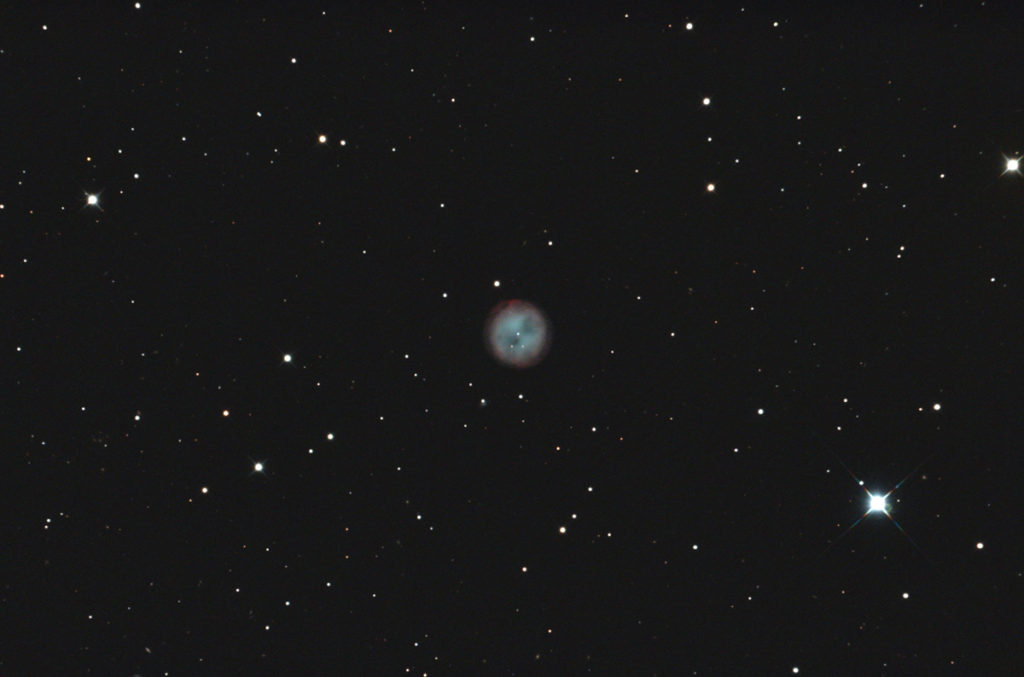
Telescope: Astro-Tech 8” f/8 Ritchey-Chretien, Orion Atlas EQ-G
Camera: ZWO ASI071MC Pro, -10C, Gain 200, Baader Mk III MPCC
Filter: Orion Imaging Skyglow Filter
Guide scope: Astro-Tech 60mm, Meade DSI Pro II, PHD
Exposure: (12+16+36+44)x240s, saved as FITS
Darks: 32x240s, saved as FITS
Flats: 32×0.2s, sky flats taken at dusk
Average Light Pollution: Red zone, Bortle 8, poor transparency
Lensed Sky Quality Meter: 18.0-18.4 mag/arc-sec^2
Stacking: Mean with a 2-sigma clip.
White Balance: Nebulosity Automatic
Software: Nebulosity, Deep Sky Stacker, Photoshop
M97 is a wonderful little planetary located just below the bowl of the Big Dipper. It is easy to locate, but a challenge to see from my light polluted backyard. I chose this as the last target from a series of all-night imaging runs starting on the evenings of November 6, 7, 9, and 11. The sky conditions on each of these nights were relatively poor and the source images were pretty rough, but combining a total of 119 images gave a pretty nice result. If you look closely there are tiny galaxies scattered across the field. For example, to the lower left of the nebula is PGC 34279 (Mv 16.0) and above the nebula are PGC 2490291 (Mv 17.6) and 2490640 (Mv 17.3).
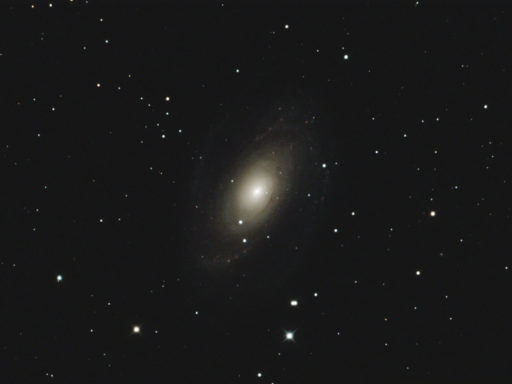


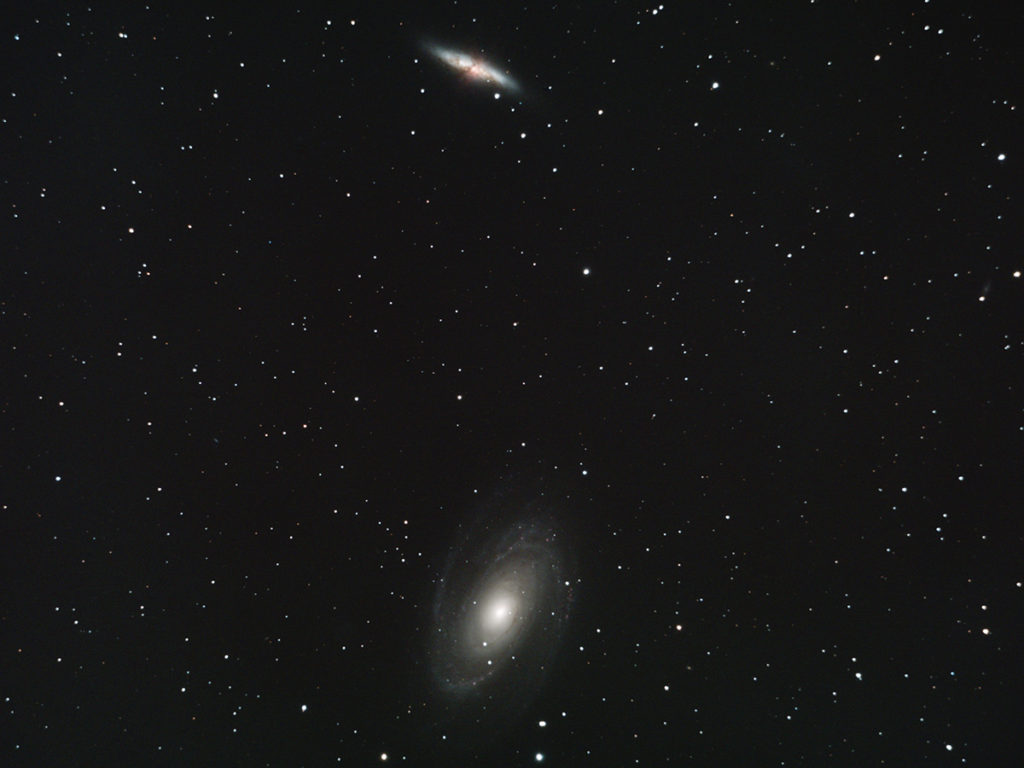
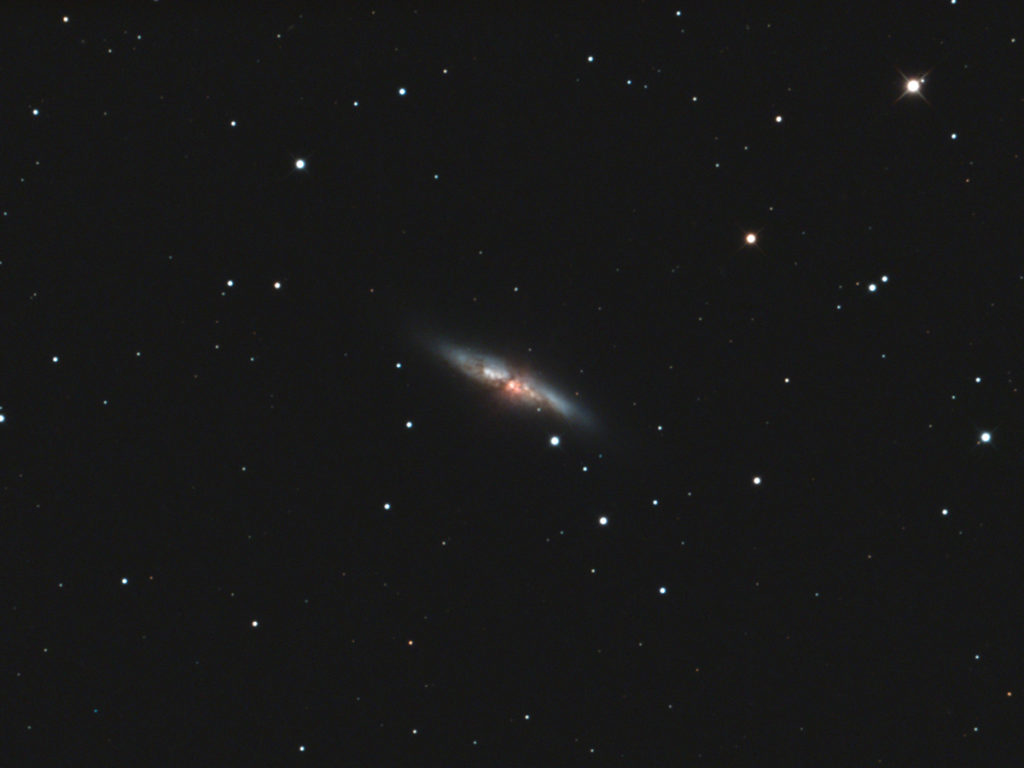
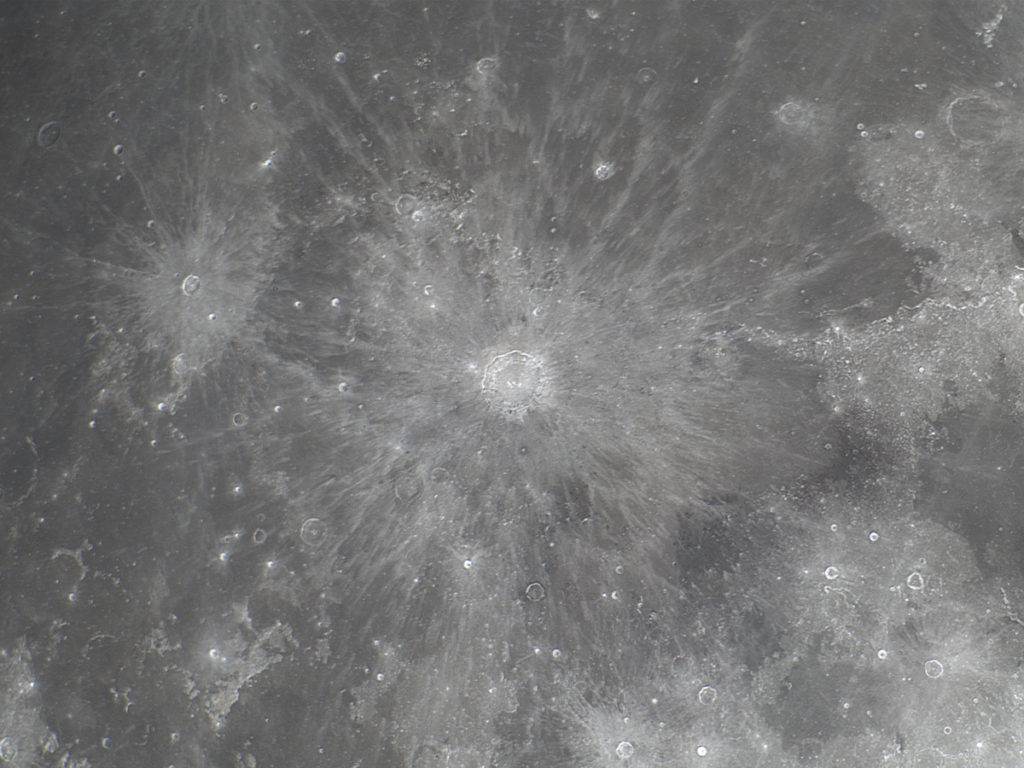
Recent Comments